Creating, planning, organizing, marketing, developing, and hosting your own race takes a lot of time, work, and money – and possibly some professional help!
Hire A Professional
We first posted this page back in June of 2013, and since then have received hundreds of requests per year for individuals, groups, or charities hoping to put on their own event. 90% of those emails were just testing the waters for an event that was way beyond their budget or skillset, and 10% we either directly produced ourselves through our partner network of races (including our own Brett & Kristen Stewart's Adventure Fitness – ADV.FIT) or consulted to help the race owners find the proper resources to get their event up & running. With dozens of OCR's, 5k's, triathlons, and even marathons under our belts it becomes much easier to assess what events have a chance and which ones are DOA. We don't want you to waste your time, money, and passion for an event when we have a team of professionals – including Green Beret Challenge – ready to help you put on the best event ever!.

Corporate Teambuilding, Charity Fundraiser, School-Based Events, Group Outings, Private Parties, Public Obstacle Course Races, and more!
Create Your Own Event
Let's say you really, really, really want to create an event of your own – it will be extremely challenging but can possibly be incredibly rewarding. Here are some of the things you'll need to be willing to work through or consider:
- SAFETY – First and foremost – safety. Before you even think of a cool name, logo or start searching for a website… you need to consider the safety of every single runner, volunteer, spectator and photographer on the course. Every single person that shows up on the property at any event is your responsibility. Injuries will happen, so you need to be aware and prepared with personnel: an emergency action escalation plan (and the know-how to put it into action when needed), EMTs and ambulances on-site, effective radio communication with safety officers throughout the course. Of course, the entire venue needs to be safe as well, this includes the course for participants and every natural feature as well as man-made ones you place in their way, but also the paths in & out for spectators, parking, etc. Tents, tables, flags, banners, chairs… they all become projectiles instantly in a gust of wind. Every element needs to be thought out for safety.
- Venue – You need to find the perfect venue for the race. You hopefully will be dealing with crowds, and traffic flow should be a major concern – not only on the course but for the registration, packet pick-up, the start & finish line and spectator areas. Every minute racers, volunteers or spectators spend waiting in a line their ire will build up… and they'll let you – and thousands of others – know on social media.
- Parking – Does the venue have enough parking? If not, is there parking nearby? Having to bus people over from remote lots can cause headaches even if done well – if it's handled poorly, folks will be miserable.
- Insurance – Obviously, this is required. Venues won't even consider your proposal to hold an event without at least a $1-3 million dollar policy for the day of race.
- Obstacle Ideas – You do have some original (safe) ideas for obstacles, right? (Brett – Here's a simple rule of thumb; for every foot you get people up in the air, the probability and severity of injury increases exponentially. The higher you go the injuries grow from trips & falls > sprained ankles > broken bones > far worse injuries.)
- Construction – Who is building your obstacles? Are they an engineer or carpenter who understands load balancing and the physics of thousands of pounds of potential swinging force with multiple athletes on an obstacle at once? Sure, even walls seem easy, but I've seen those fail multiple times… can your build team handle obstacles that simple, much less the more complicated “cool” ones you are envisioning?
- This is the place a thousand other races have failed by dreaming big and coming up WAY short in the construction of adequate obstacles. Something as simple and commonplace as an A-Frame Cargo Net Climb is impossible to construct safely and correctly with a few people and a couple of ladders. Anything over 10′ tall and 200# requires a mechanical lift, and the knowledge that this “small” obstacle is big enough to crush a worker, volunteer, or athlete.
- How early can you set up obstacles in place at your venue? OCRs are not a “one-day setup” race – if you're looking for that, put on a 5k trail run, and even that will take at least a full day to prep the course and festival area. A quick set-up with a seasoned, organized build team for an OCR is at least 5 days, and that's with many of the obstacles already built in a staging area, tested, marked, disassembled, and moved to their race location.
- There is an enormous difference between designing a course – or even an obstacle – and actually building it safely. Even if you think you understand this but have not ever built several safe obstacles for use by hundreds of people an hour, you have no clue. Now, imagine putting 10 or more of these time-consuming obstacles around a course.
- Timing – Will your race be chip timed? Plan on at least $5 per participant if it is, and you'll be contracting with an outside company – yet another piece for your RD to manage on race day.
- Giveaways/Swag – What will participants get? Just a t-shirt & medal? Or can you wrangle some sponsors for other stuff in their goodie bags?
- Organization – Do you have a seasoned race director and staff that can handle all the big & small details of running an event? You'd better!
- Don't be confused between a race director and an announcer – the latter is the voice everyone hears while the RD's voice should only be into the walkie-talkie to the crew and safety personnel on race day.
- While every event structure is different, roles such as:
- Race Owner: Budget, venue, insurance, permits, registration, consumables, etc.
- Course Designer/Builder: Develop course and obstacles months in advance for testing, oversee the venue & crew during construction and testing, monitor obstacles for safety/any defects during race day.
- Race Director (RD): Oversee all aspects of the event itself on race day – from the toilet paper in the port-o-johns to the depth of the water in a mud pit. Every volunteer, staff member, spectator, and athlete are the responsibility of the race director on race day – as well as overseeing the racecourse itself.
- Volunteer Director: Getting volunteers can be difficult, managing volunteers can be exponentially more difficult. I have personally seen as many as 100 volunteers NOT SHOW UP on race day, and witnessed volunteers get bored, hungry, or just feel like walking away from their posts and go home. This absolutely happens at every event, volunteers are an integral part of keeping your event safe and competition fair. Even if they do show up, are eager, and stay at their post, they still need to be trained and shown how to execute their obstacle safely, know what to do in case of any emergency, and also know simple facts like how far the athletes are on the course, when the next aid station is, what time it is, etc.
- Safety Director (SD): The SD is the point of communication between RD, staff, EMTs, and Police. First responders are trained to act independently when there is an emergency, and the SD is essential to the communication for all situations that happen during race day. Should an obstacle be closed or race rerouted while there is an emergency, the EMTs are busy with the injured individual(s) and the safety director needs to make sure the RD knows to alert the course staff ASAP.
- Post-Party – Do you need food & beverage permits? DJ? Stage? Showers for athletes to clean off?
As you can see, there's a ton that goes into it, and we're barely scratching the surface. It will require dedication, hard work, a sizable budget, probably some tears, and even more dedication. Of course, if all goes off as planned, it will all be worth it. Putting on an event of your own WILL NOT HAPPEN on a shoestring budget, and you absolutely cannot count on “making enough on pre-registrations to buy the stuff you need” – it does not work that way and you're setting your event up for failure (and possible litigation).
“As a racer, I only get to experience the adrenaline rush of crossing the finish line only once per event. As a race director, I get to bask in the joy of competition and the endorphin highs of every single racer crossing the finish line.”
– Brett Stewart (Race Director & Author of Ultimate Obstacle Race Training)
Don't Worry, There's Help Available
If this seems like a lot of work, responsibility, risk, and expense, it is.
While you can do all this your own, bringing in a seasoned event director as a consultant might seem like a very good idea. In that case, you're in luck! Our own Brett Stewart (author of Ultimate Obstacle Race Training) is an experienced event owner and race director who has consulted on events in all aspects including location scouting, logo & website set-up, developing obstacles & challenges, course set-up & testing, and race-day event direction.
Adventure Fitness has partnered up with Green Beret Challenge and can take your event from A to Z with consultation to help you brainstorm or plan any aspect of your event all the way up to a turn-key solution where our crew rolls up to your location, sets up the entire OCR course and manages the event on race day starting under $20,000.

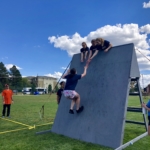
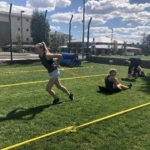

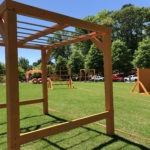
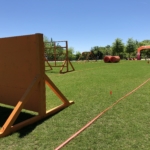
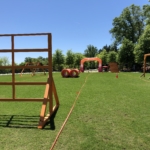
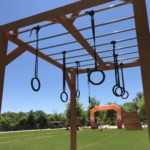

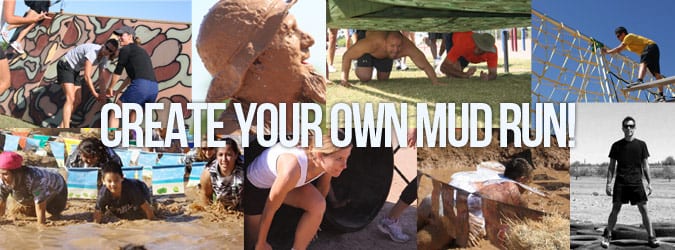



After the failed Jungle Cup in Frederick, MD, this passed spring, I wrote up an article on how to run a mud run, and sent it to a magazine editor…who turned it down. You’ve touched on a lot of things that are inherent to the events that remain on-going, and were missing from those that have gone by the way-side.
For participants, if you’re going to invest your time and money into running one of the smaller events, be sure to check out their Facebook page first…you’re likely to get a lot of good insight into the event there. These events are exploding on the scene, and it’s easy to get caught up in the hype…the Jungle Cup was billed as “the toughest 5K of your life”, and it really wasn’t…what was tough about it was the broken promises from the proprietor. It’s easy to cull the web for pictures of tight, athletic 20-somethings in spandex getting muddy, slap them together into a web page, and make it look like the event is the greatest thing since sliced bread.
Well, you can take Hero Rush off the list. There’s an area in NH where I’d love to see a trail run and possibly obstacle course developed but we shall see.
There are some people with no experience nor the capital trying to put events like others from the area not realizing the liability and risk. Some even have replicated others well popular mud races including logos and web page!
There’s no shortage of individuals that want to get in the mis with OCR’s and Mud Runs – and why wouldn’t they? In reality, there is so much more than a cool theme, interesting/new obstacles or a snazzy webpage – actually, those are some of the last things to worry about when it comes to making sure you are ready to start a company and put on an event. This is why we provide a turn-key solution that is proven, safe, and fun.
If you can do-it-yourself, that’s great… if you can’t, hire a pro!
Exactly how much capital(ballpark) does one need if attempting to start their own event?
if you got answer let me know i want to organise in my city
[…] a messy run as a fund-raiser or as a friendly competition among friends who think they’re tough mudders. Go […]